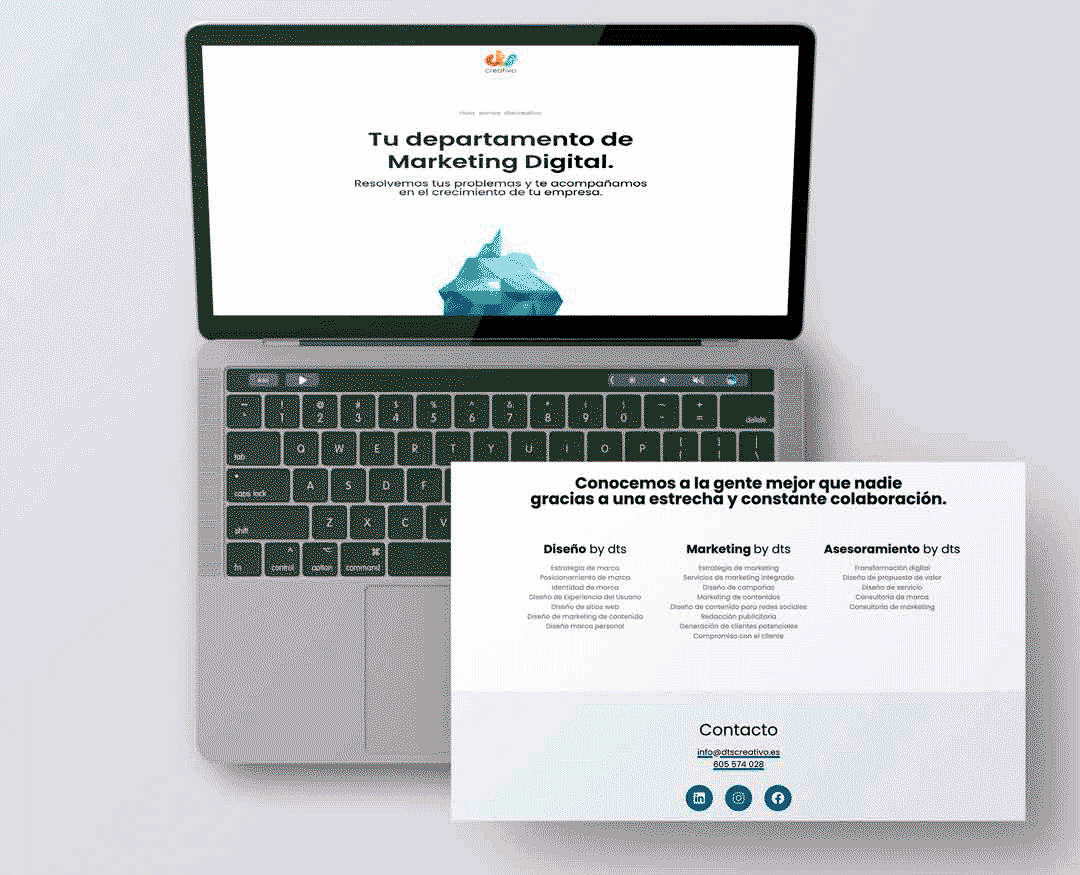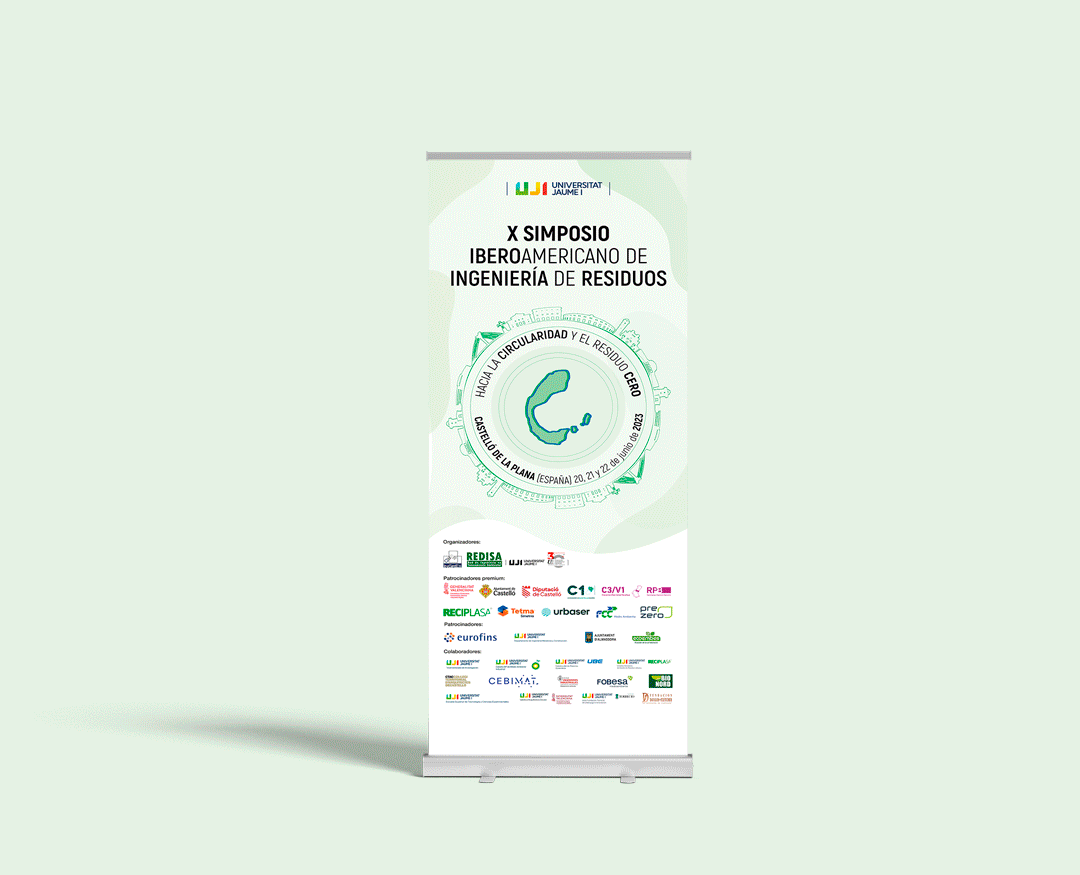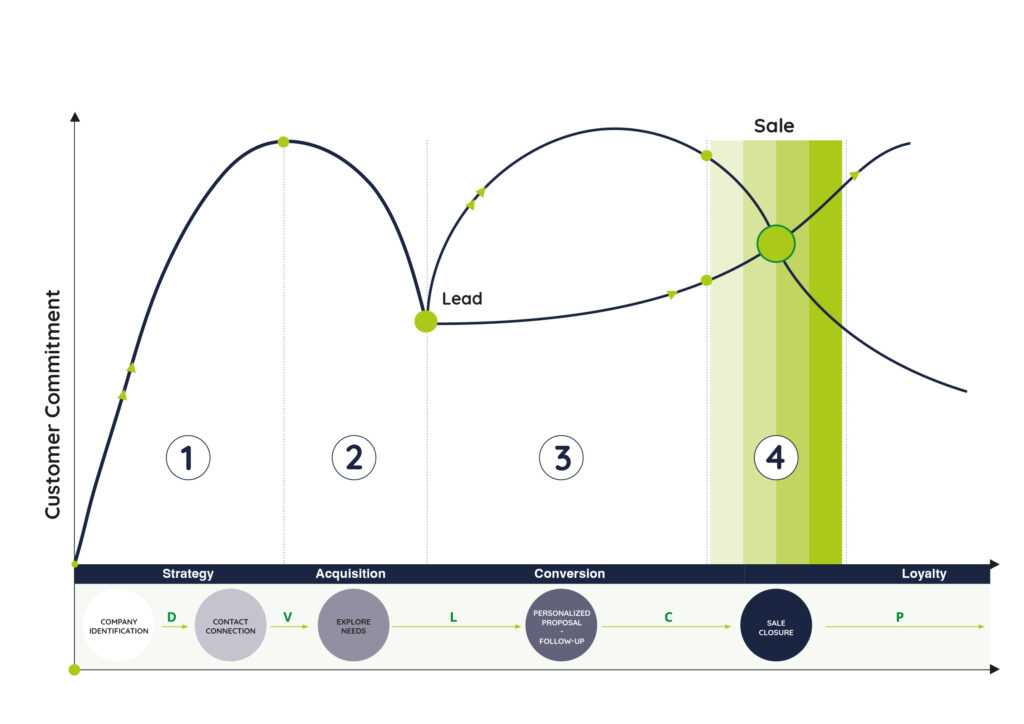Hello, we are dtscreativo.
Your Digital Marketing
Department.
We solve your problems and support you
in the growth of your company.


We support you in the growth of your company.
We collaborate with entrepreneurs, business owners, and marketing and communication managers to help them grow and progress through talent, creativity, and technology. We offer excellent service that allows us to be present in their daily activities, fostering long-lasting relationships. Our ultimate goal is to build a better future for our people, our clients, and our communities.
Brand Strategy
We design and fully implement strategies for the launch of new brands and the revitalization of existing ones.
Creative Marketing
Planning, campaign implementation, and creative support aimed at improving internal and external communication.
Web Design
Development of websites and online stores to enhance your business’s visibility, lead generation, and conversion rates.






Brand Strategy
BRANDING
Brand Identity
Brand Consultancy
Brand Management
GRAPHIC AND EDITORIAL DESIGN
Editorial Design and Layout
Digital Experience Design
Labeling and Packaging Design
Signage Design
Advertising Graphic Design
Merchandising Design
Branding is at the heart of the organization and drives the company’s success.
Creative Marketing
CAMPAIGNS
Product Launch
Service Launch
Content Marketing
Web Positioning (SEO)
Web Analytics
Paid Campaigns
SOCIAL MEDIA
Grow the community
Gain relevance, authority, and popularity
Increase sales
Strengthen communication alongside other digital channels
Ads campaign
We prepare your strategy for a memorable start.
Diseño Web
WEB DEVELOPMENT
Commercial Website
Online Store Website
Custom Programming
WEB MANAGEMENT
Content Creation
Web Positioning (SEO)
Ads Campaign
A good web design not only looks great but also makes life easier for its users.
Every company faces its own fears and challenges.
To grow in such a competitive and technologically advanced world, you need the support of a company that delivers simple, clear, and appealing results.
We practice Understanding Marketing



We become a part of you.
As experts, we work closely with you to ensure efficient and result-driven outcomes. We believe in collaborative work and smooth communication as the foundation of every project.
We know people better than anyone else
thanks to close and continuous collaboration.
Our dts Method
Sales are not the goal; they are the result of good work. They are the outcome of applying a methodology focused on a set objective.
Can We Help You?
Brand Strategy
A brand that lacks differentiation in a saturated market may struggle to stand out and capture consumer attention. This issue can limit both growth and customer retention.
Why it happens:
1. Generic offerings: Products or services that lack unique features or clear benefits compared to competitors can seem interchangeable to consumers.
2. Ineffective communication: If brand communication fails to effectively convey the unique value proposition, consumers may not perceive what differentiates the brand.
3. Lack of a coherent brand identity: An inconsistent or weakly defined brand identity makes it difficult for consumers to recognize and remember the brand.
4. Disconnect with the target audience: Not deeply understanding your audience can result in messages and products that do not resonate with their specific needs or desires.
5. Unaddressed market trends: Failing to capitalize on emerging trends or unmet market needs can cause the brand to fall behind.
How to solve it:
1. Innovate the offering: Develop unique features, benefits, or services that clearly distinguish your offering from competitors.
2. Clarify and communicate the value proposition: Ensure that all marketing messages clearly and convincingly communicate what makes your brand unique and why consumers should choose it.
3. Strengthen brand identity: Develop a strong and coherent brand identity that includes a consistent logo, tone of voice, and color palette reflected in all communications and customer touchpoints.
4. Connect with the target audience: Deepen your understanding of the target audience through market research to ensure that your offerings and communications resonate with their needs and desires.
5. Leverage market trends: Stay abreast of emerging trends and unmet needs within your industry to proactively adapt your offerings and messages.
Benefits of implementing these actions:
1. Clear differentiation: Establishing a unique offering and brand identity makes it easier for your brand to stand out in the market, attracting consumer attention.
2. Increased brand recognition: A strong and consistent brand identity enhances brand recognition and retention among consumers.
3. Emotional connection with consumers: A brand that effectively communicates and connects with the needs and desires of its target audience can foster loyalty and an emotional connection.
4. Market relevance and adaptability: By staying aligned with trends and emerging needs, the brand remains relevant and capable of attracting new market segments.
5. Improved perceived value: A clear and effectively communicated value proposition can increase the perceived value among consumers, justifying premium pricing and enhancing profitability.
Addressing the issue of a poorly differentiated brand requires a strategic approach focused on innovation, communication, and effective connection.
Would you like to implement these solutions? We can help.
A lack of brand recognition can be a significant obstacle for companies seeking to expand their market and build customer loyalty.
Why it happens:
1. Limited digital presence: An insufficient or poorly optimized online presence makes it difficult for potential customers to find or recognize your brand in the vast digital landscape.
2. Ineffective marketing strategies: Strategies that fail to capture attention or target the right audience can result in low brand awareness.
3. Unattractive or irrelevant content: Content that doesn’t resonate with your audience or provide value can fail to generate interest and recognition.
4. Lack of differentiation: If your brand is perceived as too similar to others in the market, it can be hard for consumers to remember or distinguish it.
5. Low investment in branding: A lack of investment in specific branding activities, such as advertising or event sponsorship, can limit brand visibility.
How to solve it:
1. Improve digital presence: Optimize your website for SEO, maintain active profiles on social media platforms relevant to your target audience, and consider content marketing strategies to boost your online visibility.
2. Refine marketing strategies: Ensure your marketing strategies are well-targeted and designed to capture the attention of your target audience, using effective segmentation and personalization.
3. Create valuable and engaging content: Develop content that is both relevant and interesting to your audience, including blogs, videos, and social media posts that resonate with their interests and needs.
4. Highlight the unique value proposition: Focus on communicating what makes your brand unique, including product features, service benefits, or company values, to clearly differentiate yourself from competitors.
5. Invest in branding and advertising: Consider increasing your budget for branding activities, such as online and offline advertising, event sponsorships, or collaborations with influencers to enhance brand recognition.
Benefits of implementing these actions:
1. Increased brand recognition: Improving your brand’s visibility and differentiation ensures that more people recognize and remember it.
2. Enhanced brand perception: A coherent and well-executed branding strategy can positively influence how your brand is perceived in the market.
3. Increased customer loyalty: Customers are more likely to remain loyal to a brand they recognize and identify with.
4. Competitive advantage: A well-recognized and respected brand can establish a sustainable competitive advantage.
5. Growth in sales and profitability: As brand recognition increases, so do the opportunities to convert more potential customers into actual customers, driving sales and profitability.
Addressing the lack of brand recognition requires a strategic and multifaceted approach that combines an optimized digital presence, relevant content, targeted marketing strategies, and adequate investment in branding activities.
Would you like to implement these solutions? We can help.
A negative or neutral brand perception can be a significant challenge, affecting customer loyalty, repeat purchases, and the ability to attract new customers.
Why it happens:
1. Negative customer experiences: Poor interactions with the product, customer service, or the company can lead to an unfavorable perception.
2. Ineffective brand communications: Confusing, irrelevant messages that fail to emotionally connect with the audience can contribute to a neutral or negative perception.
3. Poorly managed brand crises: Inadequate or delayed responses to product quality issues or controversies can seriously damage a brand’s reputation.
4. Lack of presence in relevant discussions: Not participating in meaningful conversations or important topics for the audience can make the brand seem disconnected or indifferent.
5. Brand values not aligned with the audience: A disconnect between what the brand represents and the values of its target audience can create emotional distance or distrust.
How to solve it:
1. Improve customer experience: Prioritize customer satisfaction at all touchpoints, from product quality to customer service, ensuring positive and consistent experiences.
2. Communicate effectively and authentically: Develop a communication strategy that clearly and consistently conveys your brand’s values and value proposition, resonating emotionally with your audience.
3. Actively manage brand crises: Establish a crisis management plan that includes real-time monitoring, rapid and transparent responses, and corrective actions for any issues that arise.
4. Engage in meaningful conversations: Participate in discussions and topics relevant to your target audience through social media, blogs, and events, demonstrating that your brand cares about the same issues they do.
5. Align brand values with the audience: Ensure that your business practices, sustainability initiatives, and corporate social responsibility reflect the values important to your audience.
Benefits of implementing these actions:
1. Improved brand perception: Proactively addressing the factors contributing to negative or neutral perception can significantly enhance how your brand is viewed in the market.
2. Increased customer loyalty: A positive brand perception fosters customer loyalty, as satisfied customers are more likely to make repeat purchases and recommend the brand to others.
3. Enhanced brand reputation: Effectively managing crises and communicating authentically can strengthen your brand’s long-term reputation.
4. Stronger emotional connection with the audience: Engaging in relevant conversations and aligning brand values with those of your audience can build deeper and more meaningful relationships with customers.
5. Competitive differentiation: A brand perceived positively for its customer experience management, effective communications, and value alignment can stand out clearly from its competitors.
Addressing negative or neutral brand perception requires an integrated and strategic approach that puts the customer at the center, effectively communicates the brand’s values and value proposition, and proactively manages any crises.
Would you like to implement these solutions? We can help.
Inconsistency in brand communication can confuse your audience, dilute your brand message, and eventually erode customer trust.
Why it happens:
1. Lack of clear brand guidelines: Without established guidelines for logo use, color palette, tone of voice, and other brand elements, inconsistency can easily occur.
2. Uncoordinated content strategies: If different teams or departments create content without a unified strategy, the communication can appear fragmented.
3. Frequent changes in brand strategy: Constant adjustments in brand direction without adequate communication can confuse both internal and external stakeholders.
4. Inconsistent use of communication platforms: Different approaches across various channels, without considering overall cohesion, can dilute the brand message.
5. Disconnect between brand and actions: When there’s a gap between what the brand communicates and what it actually does, perceived inconsistency arises.
How to solve it:
1. Develop and adhere to brand guidelines: Create comprehensive brand style guides that include directives on the use of visual elements, tone of voice, and brand personality, and ensure all teams follow them.
2. Coordinate content strategy: Establish a unified content strategy that aligns all brand messages and content, regardless of which team produces them.
3. Clearly communicate brand changes: If the brand evolves, effectively communicate these changes both internally and externally to ensure a smooth transition.
4. Unify presence across all platforms: Ensure all communication channels reflect the brand identity and key messages consistently.
5. Align actions and communications: Ensure that what your brand promises in its communications is faithfully reflected in its actions and decisions.
Benefits of implementing these actions:
1. Improved brand recognition: Consistent brand communication makes it easier for the audience to recognize and remember your brand, reinforcing its market presence.
2. Building trust: Consistency in brand communication helps build and maintain customer trust by delivering a reliable and consistent message.
3. Increased marketing effectiveness: With a unified communication strategy, each message contributes to building a stronger brand narrative, enhancing the overall impact of marketing campaigns.
4. Competitive differentiation: A brand that communicates consistently and effectively can stand out from its competitors, offering a unique value proposition.
5. Customer loyalty: Consistency in brand experience across all touchpoints increases customer satisfaction, fostering loyalty and advocacy.
Addressing inconsistency in brand communication requires a commitment to clarity, coherence, and cohesion in all aspects of brand communication.
Would you like to implement these solutions? We can help.
A weak brand content strategy can lead to ineffective communication efforts, preventing the brand from connecting with its audience in a meaningful and consistent manner.
Why it happens:
1. Lack of clarity in target audience: Without a deep understanding of who you are targeting, content may fail to resonate with the interests and needs of your audience.
2. Poorly defined content objectives: The absence of clear and measurable goals for content can result in an unfocused strategy that does not contribute to the brand’s overall objectives.
3. Content not aligned with brand identity: If the content does not consistently reflect the brand’s voice, tone, and values, it can create confusion and dilute the brand’s identity.
4. Lack of diversity in content formats: Over-reliance on a single type of content limits the brand’s ability to capture attention and engage a broader audience.
5. Ineffective content distribution: A weak distribution strategy can prevent your content from reaching your target audience, regardless of its quality.
How to solve it:
1. Define and understand your target audience: Use market research and audience data to create detailed personas that guide content creation.
2. Establish clear content objectives: Define what you want to achieve with your content, whether it’s increasing brand awareness, generating leads, or fostering customer loyalty, and ensure each piece of content contributes to these goals.
3. Ensure brand consistency: Develop content style guides that specify your brand’s voice, tone, and values to ensure all content aligns with your brand identity.
4. Diversify content formats: Experiment with a variety of formats, such as blogs, videos, infographics, and podcasts, to capture and maintain the attention of different audience segments.
5. Optimize content distribution strategy: Use a combination of organic, paid, and owned channels to effectively distribute your content, and employ SEO techniques to improve online visibility.
Benefits of implementing these actions:
1. Increased audience engagement: Relevant and well-targeted content boosts audience interaction with the brand.
2. Enhanced brand recognition: Consistent and relevant content contributes to brand recognition and recall.
3. Building trust and credibility: Quality content that consistently reflects the brand’s values can establish its authority and earn the audience’s trust.
4. Improved SEO performance: A diversified and well-executed content strategy enhances online visibility and organic traffic to the brand’s website.
5. Better customer conversion and retention: Effective content can guide consumers through the buyer’s journey, from awareness to purchase decision, and foster long-term brand loyalty.
Strengthening your content strategy requires a clear, goal-oriented approach aligned with your audience, brand identity, and business objectives.
Would you like to implement these solutions? We can help.
- A brand helps you compete
- Increases sales effectiveness and helps gain market share
- Provides a defense against price competition
- Reduces marketing costs if the brand is already established
- Enhances employee identification: a strong brand creates a positive internal culture, instilling pride and confidence
- Facilitates partnerships
- Builds loyalty and trust
- Allows for premium pricing, as consumers associate the brand with quality
- Supports company growth through the prestige acquired by the brand
- Increases company value: a strong brand makes the company more resilient during crises
Web Design
Why it happens:
A web design can become outdated for several reasons: lack of regular updates, not following current web design trends, or simply because the original design was created several years ago and hasn’t been reviewed since. Web aesthetics evolve rapidly, and what was once modern can quickly become obsolete, affecting your brand perception and site usability.
How to solve it:
1. Redesign based on current trends: Research the latest web design trends, such as minimalist designs, use of white space, modern typography, and subtle animations to create a more attractive and contemporary experience.
2. Improve usability: Ensure your website is easy to navigate with clear hierarchy, intuitive menus, and a responsive design that works across all devices and screen sizes.
3. Update visual content: Use high-quality images, videos, and other modern visual elements that are relevant to your audience and appropriately reflect your brand.
4. Implement new functionalities: Incorporate interactive features and updated functionalities like chatbots, enhanced contact forms, and user personalization options.
5. Optimize for SEO: Take advantage of the redesign to improve technical SEO aspects, such as site structure, load speed, and mobile optimization, to enhance your search engine ranking.
Benefits:
1. Improved brand perception: A modern and updated web design positively reinforces your brand image, conveying professionalism and relevance in your industry.
2. Increased visitor retention: An attractive and user-friendly site encourages visitors to stay longer, explore more pages, and engage more with your content.
3. Enhanced conversion rates: An optimized web design, both in aesthetics and functionality, can better guide users through the conversion funnel, increasing sales or contact inquiries.
4. Improved competitiveness: Keeping your website up-to-date with the latest trends and technologies helps you stay competitive in an increasingly saturated digital market.
5. Optimized SEO performance: A redesign provides an opportunity to improve technical aspects that impact SEO, resulting in better search engine rankings and increased organic traffic.
Updating and modernizing your website design is essential to maintaining the relevance and effectiveness of your online presence.
Would you like to implement these solutions? We can help.
Why it happens:
1. Fixed design: Originally designed only for desktop computers, without considering the variability of mobile devices.
2. Outdated technology: Use of technologies that are not compatible or do not display well on mobile devices, such as Flash.
3. Lack of awareness of current standards: Lack of knowledge or application of current responsive web development practices.
How to solve it:
1. Adopt responsive design: Implement a responsive web design using CSS3 Media Queries to fluidly adapt to different screen sizes.
2. Use modern frameworks: Employ modern web design frameworks that facilitate the creation of mobile-optimized websites.
3. Test on various devices: Conduct thorough testing on a variety of mobile devices to ensure optimal compatibility and usability.
Benefits:
1. Improved user experience: Users enjoy better navigation and accessibility, regardless of the device they use.
2. Increased dwell time: A mobile-optimized site encourages users to spend more time exploring your content.
3. Enhanced SEO positioning: Google prioritizes mobile-optimized websites in its search results, improving your online visibility.
4. Higher conversion rates: A positive user experience on mobile devices can lead to an increase in conversions or desired actions on the site.
5. Market competitiveness: Staying up-to-date with mobile optimization ensures your website remains competitive and relevant in the current digital landscape.
Would you like to implement these solutions? We can help.
Why it happens:
Slow website loading speed can be due to several technical factors, including unoptimized images, excessive use of JavaScript and CSS, slow hosting servers, lack of use of Content Delivery Networks (CDNs), and not implementing file compression techniques. These elements can significantly increase the time it takes for a website to load, negatively affecting the user experience.
How to solve it:
1. Optimize images: Use modern image formats like JPEG 2000, JPEG XR, or WebP that offer superior quality and smaller file sizes compared to traditional formats like JPEG or PNG.
2. Minimize the use of JavaScript and CSS: Remove unnecessary code, use minification to reduce the size of JS and CSS files, and defer loading of non-essential JavaScript for initial rendering.
3. Choose high-quality hosting: Invest in a reliable and fast web hosting provider to improve server response times.
4. Implement a Content Delivery Network (CDN): Use a CDN to distribute your website content across multiple geographically dispersed servers, reducing latency.
5. Enable file compression: Use tools like Gzip to compress your HTML, CSS, and JavaScript files, reducing their transfer size.
6. Optimize page loading: Implement techniques like lazy loading for images and videos, loading them only when they are visible to the user.
Benefits:
1. Improved user experience: A fast-loading website offers a smoother and more satisfying user experience, reducing bounce rates.
2. Better search engine ranking: Google and other search engines prioritize websites with fast loading times, potentially resulting in higher search rankings.
3. Increased conversions: Faster-loading web pages have higher conversion rates, as users are less likely to abandon the site before completing an action or purchase.
4. Bandwidth optimization: Reducing file sizes and resource requests also decreases bandwidth consumption, which can help reduce web hosting costs.
Implementing these solutions can significantly improve your website’s loading speed, offering tangible benefits for both users and the overall perception of your brand in the digital environment.
Would you like to implement these solutions? We can help.
Why it happens:
1. Unintuitive interface: Complex or unclear navigation can confuse users, making it difficult to find information or complete specific actions.
2. Unstructured content: Disorganized presentation of content makes it hard for users to quickly comprehend and access relevant information.
3. Inconsistent design: Variations in graphic design elements, such as different typographic styles, colors, or visual elements, can create a sense of disorder and negatively impact user perception.
4. High cognitive load: Too much information or too many options can overwhelm users, leading to a frustrating and unsatisfactory experience.
How to solve it:
1. Simplify navigation: Ensure the website structure is intuitive, with an easy-to-understand menu and quick access to the most important sections.
2. Organize content logically: Use clear headings, lists, and separators to structure content in a way that guides the user through the information coherently.
3. Establish visual consistency: Develop and adhere to a style guide that defines the use of colors, typography, and graphic elements to maintain visual consistency across the website.
4. Reduce cognitive load: Present information in a digestible manner, using visual elements like images or videos to complement text and avoid information overload on pages.
Benefits of implementing these actions:
1. Improved user satisfaction: An optimized user experience increases overall satisfaction, encouraging visitors to return and explore more content.
2. Increased conversion rates: Users who find it easy and pleasant to navigate the website are more likely to complete desired actions, such as making purchases or subscribing to newsletters.
3. Reduced bounce rate: A positive user experience decreases the likelihood of visitors leaving the site quickly, improving key site metrics.
4. Strengthened brand image: A website that offers an exceptional user experience reinforces the brand image, conveying professionalism and attention to detail.
Would you like to implement these solutions? We can help.
Why it happens:
Deficiencies in SEO and search engine visibility can arise from several factors, such as low-quality or unoptimized content, lack of relevant keywords, poor website structure, absence of descriptive meta tags, broken links, and not following current SEO best practices. This results in search engines being unable to properly index and rank the website, affecting its visibility in search results.
How to solve it:
1. Conduct a comprehensive SEO audit: Identify technical, content, and link issues on your website that may be affecting its performance in search engines.
2. Optimize content for relevant keywords: Research and use relevant keywords in your titles, headings, content, and meta tags to improve relevance and visibility.
3. Improve website structure: Ensure your website has a logical and easy-to-navigate structure with clear URLs and a well-organized information hierarchy.
4. Create high-quality, relevant content: Regularly publish original, useful, and high-quality content that addresses the questions and needs of your target audience.
5. Optimize meta tags: Include descriptive meta tags and page titles containing relevant keywords to improve click-through rates (CTR) from search results.
6. Implement internal and external links: Use internal links to enhance navigation and page authority distribution, and acquire external links from relevant, high-authority websites to boost credibility.
7. Ensure mobile compatibility: Since Google uses mobile-first indexing, make sure your website is fully responsive and optimized for mobile devices.
8. Improve site loading speed: Page speed is a ranking factor, so it’s crucial to optimize your website’s loading speed.
Benefits:
1. Increased search engine visibility: Effective SEO implementation improves your website’s ranking in search results, increasing its visibility.
2. Improved organic traffic: Better search engine rankings lead to increased targeted and relevant organic traffic to your website.
3. Higher authority and credibility: A well-ranked website is perceived as more authoritative and trustworthy by users and other websites.
4. Increased conversions: Enhanced visibility and quality organic traffic can result in higher conversions and online sales.
5. Improved competitiveness: Being well-positioned in search results places you in a more competitive stance against your market rivals.
Improving SEO and search engine visibility is an ongoing process that requires commitment and adaptation to evolving SEO best practices.
Would you like to implement these solutions? We can help.
Why it happens:
Poor web security can stem from a lack of updated protection measures, such as unimplemented SSL/TLS certificates, outdated software, weak or easily guessable passwords, and the absence of protection against common attacks like SQL injection, cross-site scripting (XSS), and denial of service (DoS).
How to solve it:
1. Implement HTTPS through SSL/TLS: Secure your website by using SSL/TLS certificates to encrypt data transmitted between the server and users’ browsers, protecting sensitive information.
2. Keep software updated: Regularly update your CMS (such as WordPress, Joomla, or Drupal), plugins, and scripts to the latest versions to fix known security vulnerabilities.
3. Use strong passwords and multifactor authentication (MFA): Ensure all user and admin accounts use strong, unique passwords, and enable multifactor authentication wherever possible.
4. Implement a web application firewall (WAF): A WAF can help protect your website from common attacks by filtering and monitoring HTTP traffic between your website and the internet.
5. Conduct security scans and penetration tests: Use security scanning tools to identify vulnerabilities and regularly perform penetration tests to assess the robustness of your security.
6. Enable DDoS protection: Consider DDoS protection services to help mitigate the risk of denial-of-service attacks that can make your website inaccessible.
7. Security education for the team: Train your team on best security practices, including recognizing phishing attempts and the importance of keeping software updated.
Benefits:
1. Improved user trust: A secure website increases user trust, which is essential for maintaining and growing your customer base.
2. Protection of sensitive data: Robust security measures protect your users’ personal and financial information from theft and data breaches.
3. Reduced risk of cyberattacks: Implementing strong security practices decreases the risk of cyberattacks that can compromise your website and damage your reputation.
4. Regulatory compliance: Keeping your website secure ensures compliance with relevant data protection regulations, avoiding potential fines and penalties.
5. Business continuity: Protecting your website against security threats ensures the continuity of your online operations, preventing disruptions that could negatively impact your revenue and reputation.
Would you like to implement these solutions? We can help.
- It positions you as a relevant and trustworthy player in your industry.
- An optimized and attractive website draws in more customers, helping you gain a larger market share.
- A professional website offers a superior and differentiated user experience.
- A well-established website leverages efficient and effective SEO strategies, content marketing, and digital campaigns.
- A strong digital presence fosters a solid internal culture, instilling pride and confidence among employees.
- A well-presented website provides a professional and reliable image, aiding in the creation of strategic alliances.
- An intuitive and user-friendly website builds long-term relationships based on consistent positive experiences.
- A high-quality website enhances the perceived value of your products or services, allowing you to set prices above the competition.
- A strong web presence supports company growth, leveraging prestige and reputation gained through a quality digital experience.
- A well-developed and maintained website boosts your company’s value. In times of crisis, a strong digital presence makes you more resilient and capable of overcoming challenges.
Creative Marketing
The lack of a coherent marketing strategy can confuse both internal teams and potential customers, resulting in scattered marketing efforts and suboptimal results.
Why it happens:
1. Unclear or misaligned objectives: Without clear objectives, it is difficult to design a cohesive strategy that guides all marketing actions toward a common goal.
2. Lack of understanding of the target audience: Not deeply knowing your audience can lead to marketing messages and tactics that do not resonate with their needs or preferences.
3. Inconsistent communication: The absence of a clear brand guide can result in contradictory or confusing messages across different channels.
4. Isolated efforts: When teams or tactics work in silos without central coordination, the opportunity to create synergies is lost.
5. Insufficient analysis and adjustments: Without regularly reviewing performance and adjusting the strategy, it is easy to stray from the path toward marketing goals.
How to solve it:
1. Set clear and measurable objectives: Define what you aim to achieve with your marketing efforts, ensuring they are specific, measurable, achievable, relevant, and time-bound (SMART).
2. Know your target audience: Conduct market research to understand the needs, desires, and behaviors of your audience, and use these insights to inform your strategy.
3. Create a coherent brand guide: Develop and maintain a brand style guide that includes tone of voice, color palette, logo usage, and other visual elements to ensure consistency across all channels.
4. Integrate marketing efforts: Ensure all marketing tactics and channels are aligned and working together towards common goals.
5. Regularly monitor, analyze, and adjust: Establish KPIs (key performance indicators) to track the success of your strategy and be proactive in making adjustments based on performance and market feedback.
Benefits of implementing these actions:
1. Improved efficiency and effectiveness: A coherent strategy ensures that all marketing efforts are aligned and work together efficiently, maximizing return on investment.
2. Increased brand recognition: Consistency in communication helps build strong brand recognition, making it easier for customers to identify and remember your brand.
3. Better connection with the target audience: Understanding and effectively targeting your audience makes your marketing strategy more relevant and resonant, improving engagement.
4. Enhanced adaptability: A strategy that includes regular review and adjustment allows the brand to be more agile and adapt to changes in the market or consumer behavior.
5. Measurable results: With clear objectives and established KPIs, it is easier to measure the success of your marketing efforts and demonstrate the value of your campaigns.
Developing and maintaining a coherent marketing strategy is fundamental to the long-term success of any business.
Would you like to implement these solutions? We can help.
Lack of audience engagement is a common challenge that can limit the impact of your marketing and communication strategies, reducing the effectiveness of your efforts to build strong relationships with your audience.
Why it happens:
1. Irrelevant or uninteresting content: If the content does not resonate with the interests, needs, or values of your audience, they are unlikely to engage with it.
2. Inadequate communication frequency: Too much or too little contact can lead to disinterest or forgetfulness about the brand.
3. Lack of two-way interaction: One-way communication can make the audience feel disconnected and undervalued.
4. Poor user experience: Complicated web design, slow loading times, or difficult navigation can frustrate users and deter engagement.
5. Disconnect with preferred platforms: Not being present or active on the channels where your audience spends their time reduces opportunities for interaction.
How to solve it:
1. Create relevant and engaging content: Align your content with your audience’s interests and needs. Use analytics and feedback to understand what resonates best and adjust your content strategy accordingly.
2. Optimize communication frequency: Find the right balance in the frequency of your messages to keep your audience informed and engaged without overwhelming them.
3. Encourage interaction and dialogue: Invite your audience to participate through comments, surveys, forums, and other forms of interaction to create a community around your brand.
4. Improve user experience across all channels: Ensure your website and social platforms are user-friendly, fast, and accessible from any device.
5. Be active on relevant platforms: Identify where your audience congregates and increase your presence and activity on those channels, adapting your content to the preferred style and format of each platform.
Benefits of implementing these actions:
1. Increased audience engagement: Implementing these strategies will result in a higher level of audience interaction with your brand, leading to more likes, comments, shares, and dwell time.
2. Improved community building: Encouraging active participation creates a sense of community and belonging among your audience, which can increase brand loyalty.
3. Greater organic reach: An engaged audience is more likely to share your content, expanding your reach organically and attracting new followers.
4. Valuable audience insights: Direct interaction with your audience provides valuable data and insights about their preferences and behaviors, informing and improving future marketing strategies.
5. Improved conversion and retention: An engaged audience is more likely to convert and remain loyal to your brand, enhancing both customer acquisition and retention.
Improving audience engagement requires a strategic and user-centric approach that values relevance, interaction, and user experience. By focusing on these areas, you can build a deeper and more meaningful relationship with your audience, which is crucial for the long-term success of any brand.
Would you like to implement these solutions? We can help.
Low customer retention can indicate various underlying issues affecting the customer experience and their perceived value.
Why it happens:
1. Unsatisfactory customer experience: This can range from poor customer service to delivering a product or service that does not meet expectations.
2. Lack of engagement and communication: Infrequent interaction or irrelevant content can make customers feel disconnected from the brand.
3. Absence of loyalty programs or rewards: The lack of incentives for repeat purchases or deeper engagement with the brand can reduce retention.
4. Perceived lack of value: If customers do not perceive ongoing value in the product or service, they are likely to seek alternatives.
5. Insufficient personalized experiences: The lack of personalization in the shopping experience or communication can make customers feel undervalued.
How to solve it:
1. Improve customer experience: Ensure that all customer touchpoints offer a positive experience, from web navigation to post-purchase support.
2. Increase engagement through communication: Use email marketing, social media, and other channels to keep customers informed and engaged with relevant and attractive content.
3. Implement loyalty programs: Develop reward or loyalty programs that offer tangible benefits to repeat customers.
4. Highlight ongoing value: Regularly communicate the value your product or service brings to customers, including product updates, case studies, and usage tips.
5. Personalize the experience: Use customer information to personalize interactions, from product recommendations to targeted communications.
Benefits of implementing these actions:
1. Increased customer retention: By addressing the causes of dissatisfaction, you will improve customer loyalty and retention.
2. Higher customer lifetime value (CLV): Retained customers tend to buy more over time, increasing their lifetime value.
3. Reduced acquisition costs: Retaining existing customers is less expensive than acquiring new ones, significantly lowering marketing and sales costs.
4. Valuable feedback: Loyal customers are more likely to provide valuable feedback, helping to improve the product or service.
5. Brand ambassadors: Satisfied and retained customers often become brand advocates, recommending your products or services to others.
Addressing low customer retention requires an integrated approach that enhances the customer experience at all levels, incentivizes loyalty and repeat purchases, and highlights the continuous value your brand offers.
Would you like to implement these solutions? We can help.
A low lead conversion rate can result from various challenges in the sales funnel and marketing strategy.
Why it happens:
1. Unclear or unconvincing offer: If potential customers do not understand the value of your offer or do not find it attractive, they are unlikely to move through the conversion funnel.
2. Weak or absent calls to action (CTAs): Unclear or hard-to-find CTAs can reduce the conversion rate, as leads do not know what action they are expected to take.
3. Complicated conversion process: A lengthy and complicated purchase or registration process can deter leads from completing the action.
4. Lack of trust or credibility: If your website or offer lacks trust-building elements (such as testimonials, reviews, or guarantees), leads may be hesitant to convert.
5. Inadequate targeting: Targeting the wrong audience with your campaigns can lead to low conversion rates, as the messages do not resonate with the needs or desires of the leads.
How to solve it:
1. Clarify and highlight the value proposition: Ensure that your offer is clear, direct, and prominently featured in all communications and customer touchpoints.
2. Optimize calls to action: CTAs should be clear, visible, and compelling, clearly indicating what leads should do next.
3. Simplify the conversion process: Review and reduce the steps needed to convert. This can include shorter forms, faster payment options, and removing unnecessary barriers.
4. Increase trust and credibility: Include social proof elements like testimonials, case studies, reviews, and certifications on your site and marketing materials.
5. Improve targeting and segmentation: Ensure that you are directing your marketing efforts toward those most likely to be interested in your offer, using data and analytics to refine your approach.
Benefits of implementing these actions:
1. Increased conversion rate: By directly addressing the obstacles preventing conversion, you will see an increase in the number of leads that convert into customers.
2. Better user experience: An optimized conversion process and clear communications enhance the overall user experience, which can boost customer satisfaction and loyalty.
3. Sales funnel efficiency: By removing unnecessary barriers and optimizing the conversion process, the sales funnel becomes more efficient, allowing you to close more sales in less time.
4. Increased brand trust: Incorporating trust and credibility elements not only helps improve conversions but also strengthens the overall perception of your brand.
5. Improved marketing ROI: Improving the conversion rate means you are getting more value from your existing marketing efforts, resulting in a better return on investment.
Addressing a low lead conversion rate requires a combination of careful analysis, strategic adjustments, and enhancements to the user experience.
Would you like to implement these solutions? We can help.
When a client has difficulty reaching their target audience, it can be due to several underlying factors.
Why it happens:
1. Inaccurate segmentation: Audience segmentation may be based on incorrect assumptions or outdated data, leading to messages not reaching the right people.
2. Lack of understanding of the ideal customer: Absence of a clear definition of the ideal customer or buyer persona, making it difficult to understand their needs, behaviors, and where they get their information or entertainment.
3. Inadequate content strategy: Content may not be relevant or appealing to the target audience, reducing their interest and engagement.
4. Wrong communication channels: Using channels where the target audience is not active significantly reduces the visibility of campaigns.
5. Poor budget allocation: Investing in the wrong channels or not adjusting the budget according to performance can limit the ability to effectively reach the desired audience.
How to solve it:
1. Review and refine segmentation: Use data analysis and advanced segmentation tools to better identify and understand your target audience.
2. Clearly define the ideal customer: Conduct market research and surveys to create or update your buyer persona, ensuring it accurately reflects your audience.
3. Optimize the content strategy: Develop content that resonates with your target audience, based on their interests, needs, and behaviors.
4. Choose the right channels: Identify and focus on the channels where your target audience spends their time, which may include specific social media platforms, content platforms, email, etc.
5. Adjust budget based on performance: Monitor the performance of your campaigns and reallocate the budget in real-time towards the most effective channels and tactics.
Benefits of implementing these actions:
1. Improved reach and visibility: By targeting the right audience on the appropriate channels, you significantly increase the chances of your message being seen and heard.
2. Increased message effectiveness: A relevant and personalized message for your audience will increase engagement and response to your campaigns.
3. Optimized marketing budget: Investing in the channels and strategies that work best will yield a higher return on investment, avoiding unnecessary expenses.
4. Stronger relationships: Understanding and directly addressing your audience’s needs and desires fosters a deeper connection and long-term loyalty.
5. Better conversion rates: Effectively reaching your target audience and speaking their language makes it more likely they will take the desired action, whether it’s a purchase, registration, download, etc.
Understanding and overcoming difficulties in reaching the target audience requires a detailed and data-driven approach, which not only improves the performance of current campaigns but also lays the foundation for future success in all marketing initiatives.
Would you like to implement these solutions? We can help.
Low online visibility is a common problem for many businesses, especially in saturated markets or for those just starting to establish their digital presence.
Why it happens:
1. Insufficient or nonexistent SEO: Poor SEO prevents websites from appearing in top search results, reducing visibility.
2. Limited social media presence: Not having a solid social media strategy or not being present on the right platforms can limit reach to potential customers.
3. Low-quality or irrelevant content: Content that doesn’t add value or resonate with the target audience can fail to attract and retain visitors.
4. Weak content marketing strategy: Lacking a content strategy or having one that is not aligned with business goals can negatively impact online visibility.
5. Insufficient digital advertising: Underinvestment in digital advertising or poorly executed campaigns can result in low visibility.
How to solve it:
1. Optimize SEO: Improve your website’s on-page and off-page SEO to increase its ranking in search engines. This includes keyword optimization, meta tags, site speed, quality content, and link building.
2. Expand and optimize social media presence: Identify platforms where your target audience spends time and develop engaging and relevant content for those audiences. Interact regularly with your community to build relationships.
3. Improve content quality: Create valuable and relevant content that addresses the needs and questions of your target audience. Use varied formats such as blogs, videos, infographics, and podcasts.
4. Develop a robust content marketing strategy: Plan and execute a content strategy aligned with business goals and audience needs. This can include creating an editorial calendar and promoting content through appropriate channels.
5. Invest in digital advertising: Use digital advertising platforms like Google Ads, social media, and native advertising to promote your business. Carefully segment your campaigns to effectively reach your target audience.
Benefits of implementing these actions:
1. Increased organic traffic: Better search engine ranking leads to an increase in organic traffic, which is sustainable in the long term.
2. Enhanced brand recognition: An active and strategic presence on social media and other digital channels increases brand recognition and positive perception.
3. Customer engagement and loyalty: High-quality content not only attracts visitors but also fosters loyalty and engagement among existing customers.
4. Better marketing ROI: Optimizing content strategies and digital advertising can result in more efficient use of the marketing budget, improving return on investment.
5. Market competitiveness: Improved online visibility positions the business as a thought leader in its industry, increasing its competitiveness.
Addressing low online visibility requires a multifaceted approach integrating SEO, content marketing, social media, and digital advertising.
Would you like to implement these solutions? We can help.
- Ensures that all marketing efforts are aligned with the company’s objectives by defining specific actions to be taken.
- Allows for continuous adjustments and optimizations based on data and analysis.
- Efficiently allocates resources, time, and budget by defining effective strategies and tactics.
- Focuses marketing actions on key areas and uses measurement tools to maximize return on investment.
- Provides insights into market needs and customer behaviors, enabling precise segmentation.
- Develops differentiating strategies that position you above the competition.
- Enhances brand recognition and customer loyalty by maintaining a strong and coherent brand image.
- Allows the company to swiftly adapt to market changes or shifts in consumer behavior, maintaining relevance.
- Facilitates ongoing tracking and evaluation of campaigns, allowing for quick adjustments and performance enhancements over time.
- Ensures all team members and departments are aligned with marketing goals, improving internal collaboration and efficiency.
- Implements specific strategies to maintain and boost customer loyalty, fostering long-term relationships.
- Reaches and engages new potential customers, driving sales growth and market expansion.
- Identifies and leverages new market, product, or service opportunities based on analysis and trends.
- Implements strategies that ensure the business’s stability and continuous expansion.
- A customer-centric approach improves user satisfaction and recommendations.
Are these your challenges?
We accompany you on the journey
to make them a reality
- Reaching new market segments.
- Increasing online business sales.
- International expansion.
- Improving communication and contact with customers.
- Gaining authority, popularity, and brand relevance.
- Exploring new business models.
- Increasing company visibility.
- Targeting a better-segmented audience to increase conversions.
- Improving results from each marketing action.
- Creating a closer bond with customers to turn them into brand ambassadors.
- Enhancing customer satisfaction.

